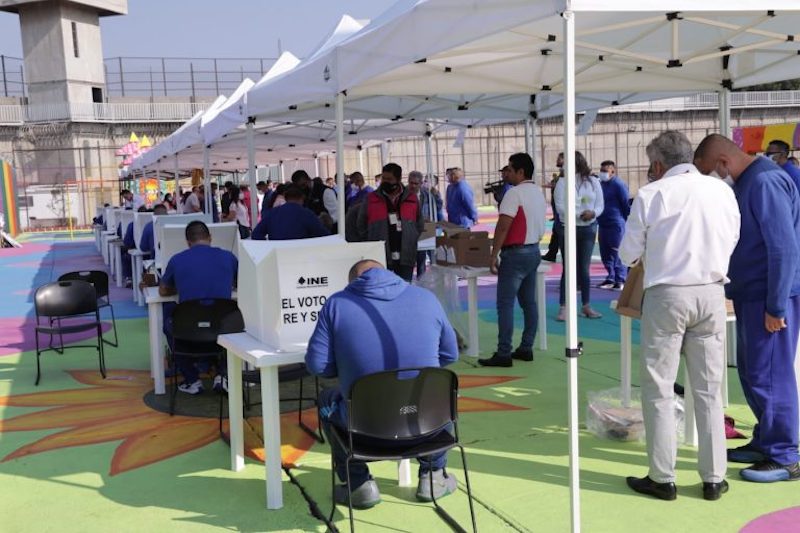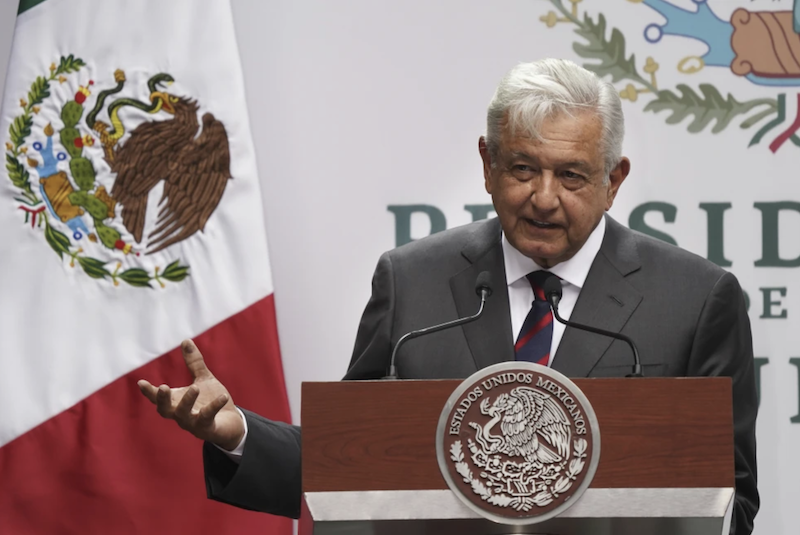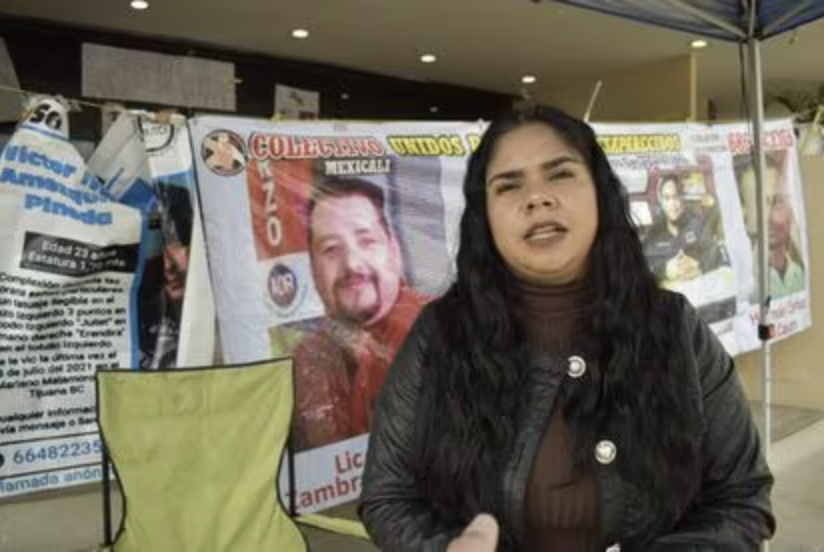
08/02/13 – The murders of a journalist and human rights defender in unrelated attacks in Oaxaca in the past two weeks has continued to fuel calls for stronger government protection of such targeted populations. Members of civil society, non-governmental organizations, and members of Congress have expressed their concerns for the ongoing challenges and danger human rights defenders and journalists face. Mexico currently ranks as one of the most dangerous countries in the world for journalists to work according to the Committee to Protect Journalists (CPJ).
On July 17, the body of Alberto López Bello (28), a crime reporter for the news outlet El Imparcial, was found in Oaxaca City, Oaxaca, alongside another victim, Arturo Franco Rojas, who was identified as an undercover police informant. Although investigations are ongoing, López Bello‘s body had gunshots and signs of physical abuse. The State Attorney General’s Office (Procuraduría General de Justicia del Estado, PGJE) is investigating whether the murder was connected to López Bello’s work as a journalist both with El Imparcial and with a local radio program in Oaxaca called “Foro Político.” Colleagues said that he covered “the police beat and had recently published several stories about drug sales in the city,” as well as organized crime and occasionally police involvement in illicit activities, states the CPJ. In fact, news reports indicate that state police briefly detained López Bello and a colleague from El Imparcial in May 2013 after they took pictures of an alleged narcomensaje at a crime scene, although they were soon released with no charges. According to CNN México, at López Bello’s funeral two days after his body was found, family and friends in attendance protested in front of the government’s palace (Palacio de Gobierno), calling on authorities to investigate the case. The funeral march then moved to the city’s central square, the Zócalo, where supporters pushed for the Federal Attorney General’s Office (Procuraduría General de la República, PGR) to take up López Bello’s case.
Three days after the discovery of López Bello, Oaxacan authorities found the body of human rights defender Herón Sixto López (43) in the rural municipality of San Sebastián Tecomaxtlahuaca. According to the PGJE, the victim had “six bullet wounds (both entrance and exit), three in the chest, two in the head, and one in the neck.” Sixto López was a lawyer who worked as a representative at the Center for Guidance and Counsel to the Indigenous People (Centro de Orientación y Asesoría a Pueblos Indígenas) in Juxtlahuaca, advocating for and supporting the large indigenous communities in Oaxaca, including the Mixtecas and Triquis. The human rights defender, who had received threats in the past for his work with the indigenous population, had been reported missing by his family five days before his discovery. Similar to journalist López Bello’s murder, immediately following that of Sixto López, community members and advocates–including the Oaxaca ombudsman for Human Rights in Oaxaca, Arturo Peimbert Calvo, and the president of the Permanent Commission on Human Rights in the LXI Legislature in Oaxaca, Pavel Renato López Gómez– called for the government’s prompt attention to resolving the case.
The murders of Sixto López and López Bello come amidst growing criticism in Mexico regarding the implementation of Mexico’s Law for the Protection of Human Rights Defenders and Journalists (Ley para la Protección de Personas Defensoras de Derechos Humanos y Periodistas). The law, which originated in 2010 thanks to the work of Mexican civil society in demanding the government increase protections for human rights defenders and journalists, was passed on June 25, 2012. Designed to protect the safety of those on the front lines of freedom of expression and human rights advocacy, the law created mechanisms for cooperation among state and federal government agencies, including the Mechanism of Protection for Defenders of Human Rights and Journalists (Mecanismo de Protección para Personas Defensoras de Derechos Humanos y Periodistas). Read more about the law’s 2012 passage here.

Yet as the Washington Office on Latin America (WOLA) argues, the law has not been fully implemented, specifically with regards to the Mechanism of Protection, and is failing in its efforts to protect its intended populations. In a letter to Secretary of the Interior Miguel Ángel Osorio Chong on the one-year anniversary of the law’s passing, WOLA’s Senior Associate for Mexico and Central America, Maureen Meyer, laid out four concerns the organization has with the mechanism’s implementation: “the unfulfilled or partially unfulfilled measures established by the Government’s Compliance Committee [Junta de Gobierno]; the insufficient number of personnel to ensure the Mechanism’s operation; the obstacles impeding access to the Mechanism’s funds; [and] the difficulties coordinating between different actors [parties] involved.” WOLA called on Secretary Osorio Chong to support the implementation of the protection mechanism, as well as work with civil society to see the task through. Read the full letter from WOLA here.
WOLA, however, is not the only voice criticizing the Mexican government for not doing enough to protect human rights despite the passage of the Law for the Protection of Human Rights Defenders and Journalists. As CNN México writes, the organization Artículo 19, which has called on the government for stronger protection mechanisms, “reported that there had been 207 acts of aggression against journalists and human rights defenders [in 2013], the majority of which were in Veracruz, the Federal District, Oaxaca, and Baja California, states that made up 41.5% of all aggressions.” Artículo 19 also found that “in the first six months of 2013, there were 151 aggressions against freedom of expression in Mexico, 11 of which were in Oaxaca, where there have been five journalists killed since 2009.” Meanwhile, the National Center for Social Communication reports, “in the first 100 days of the Enrique Peña Nieto government, there were 56 attacks against journalists, including one murder, and 37 attacks against human rights defenders.” In response specifically to Sixto López’s murder, the head of the Oaxaca-based Bartolomé Carrasco Center for Human Rights (Centro de Derechos Humanos Bartolomé Carrasco), Nora Martínez Lázaro, said that the
law’s protection mechanism is insufficient and failed to protect Sixto López after he reported receiving threats.
Even members of Mexico’s Congress have spoken out and are pushing fellow congressmen to ensure their state’s support of the law’s protection mechanisms. At a Congressional session in mid-July, legislators signed on to an agreement spearheaded by two Senators of the Party of the Democratic Revolution (Partido de la Revolución Democrática, PRD), Angélica de la Peña and Alejandro Encinas, which will require states to report on its progress made towards implementing the mechanism. According to news agency CIMAC (Comunicación e Información de la Mujer A.C.), Senator Encinas called out six states–Baja California, Baja California Sur, Nuevo León, Quintana Roo, Sonora, and Tlaxcala–and the Federal District (Distrito Federal, DF) for not only failing to sign the collaboration agreement, but for also failing in general to establish protection mechanisms for human rights defenders and journalists. As Freedom House explains,
“There is a lack of political will at the state level. The 2012 protection mechanism includes collaboration agreements with state level governments to ensure their participation and cooperation. However, only 25 out of the 31 states and the Federal District have signed agreements approving the mechanism, leaving seven states still uncommitted. Even in the cases where states have signed, it is not clear to what extent they will comply with the requirements for the protection of journalists.”
At the same Congressional session, Deputy Ricardo Monreal Ávila of the Citizen’s Movement (Movimiento Ciudadano) argued that the Mexican government, particularly the Secretary of the Interior (Secretaría de Gobernación, Segob), must be better about distributing the funds set aside for the protection mechanisms established under the law, specifically the Mechanism Fund (Fondo del Mecanismo) and Human Rights Fund (Fondo de Derechos Humanos). Monreal Ávila, citing various news sources, alleged that only 5.85 million pesos of the 217 million pesos dedicated to the mechanism’s funds have been released.
For his part, President Enrique Peña Nieto (2012-2018) has vowed to strengthen human rights protections and ensure that “rights established on paper become reality.”
Sources:
“Mexican crime reporter shot to death in Oaxaca.” Committee to Protect Journalists. July 18, 2013.
“Un defensor de derechos humanos aparece muerto en Oaxaca.” CNN México. July 21, 2013.
AFP. “Cuerpo de Herón Sixto López aparece baleado en Oaxaca.” Terra Noticias. July 21, 2013.





Pingback: Violence against journalists leads to CNDH recommendation, undermines Mexican democracy | Justice in Mexico